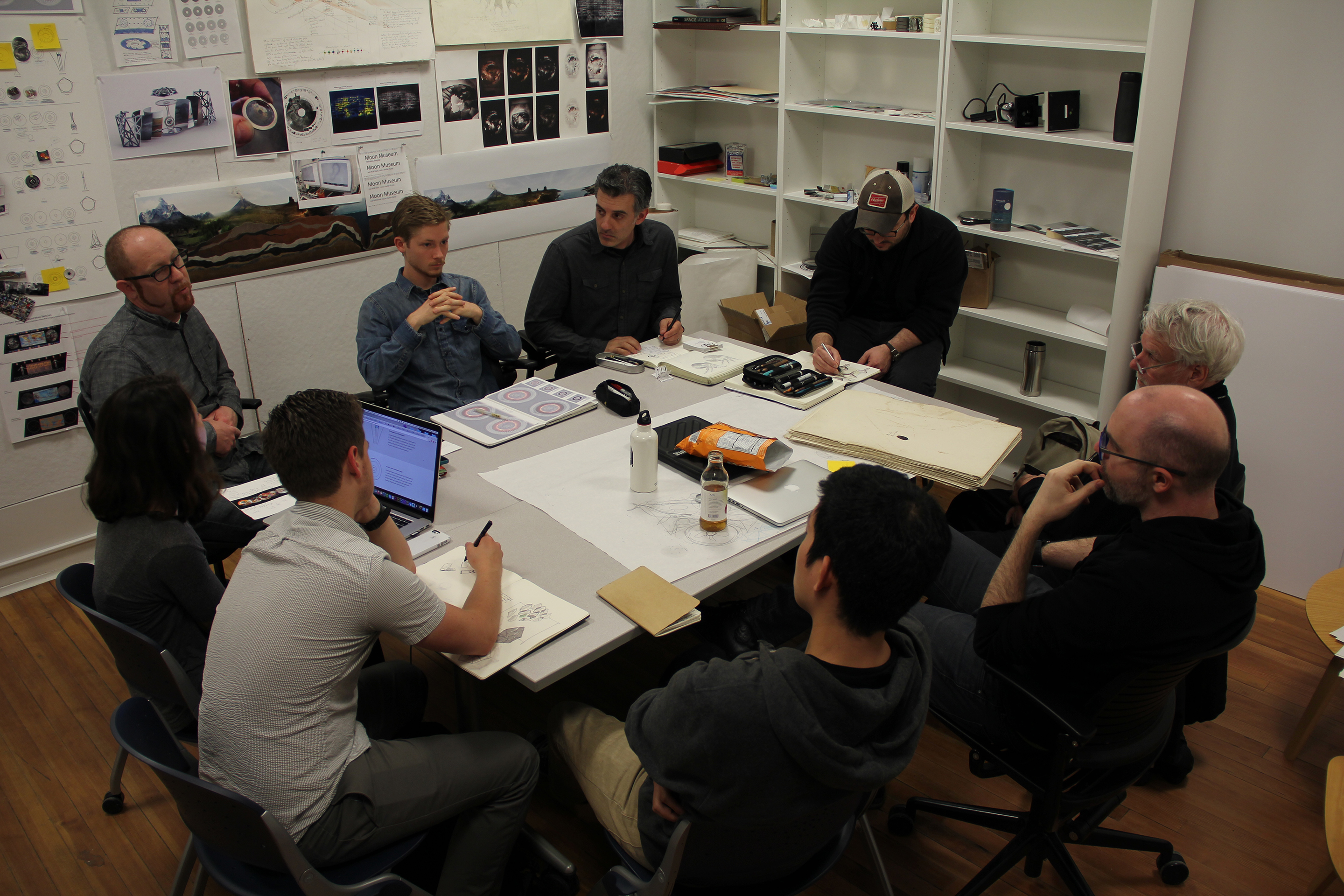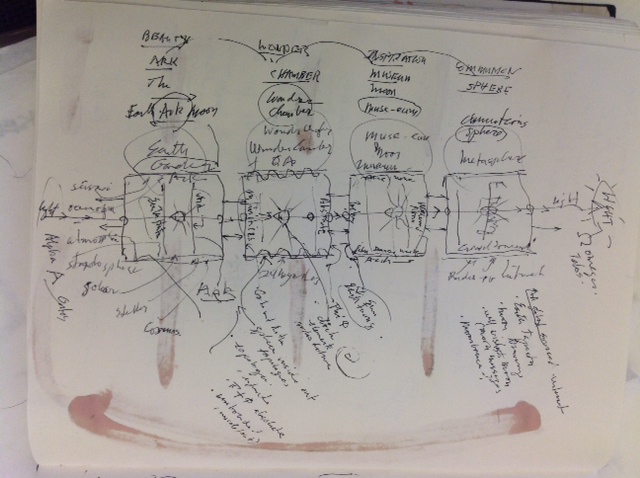History
The MoonArk project began at Carnegie Mellon University in 2008.
The MoonArk project is an historic first, built to last for eons on the surface of the Moon and intended serve as an indelible beacon of hope for humanity today and into the distant future.
The MoonArk project began in 2008 when Astrobotic, a Pittsburgh robotics company, called for a meeting with Dean Hilary Robinson of the College of Fine Arts at Carnegie Mellon. Dean Robinson gathered a meeting of Lowry Burgess, renowned space artist with NASA, John Carson, head of the School of Art in the College of the Arts, and Golan Levin, the Head of the Frank-Ratchye STUDIO for Creative Inquiry, an experimental interdisciplinary center in the College. In the next two meetings an agenda evolved to establish the Arts on the Moon (originally called the Moon Arts project).
We quickly realized the extreme limitations because of the cost of payload was $1.2 million per kilogram and that our work would have to be nearly weightless. Next we sent out an open request within the University and beyond into various arts communities, to solicit proposals to our steering group. The meetings were productive and the group decided to explore 12 proposals from both internal and external to CMU. We then went to work expanding the team of artists, humanists, designers, scientists, and engineers, involved with emerging media, new and ancient technologies, as well as hybrid processes.
Since 2010, the Moon Arts project has been led and managed by CMU faculty members Lowry Burgess, Mark Baskinger, Matt Zywica and Dylan Vitone with Mark Rooker, a faculty member at James Madison University. For four years, we worked to hone the Moon Arts project into a cohesive and integrative concept – in 2014, we named it the MoonArk. As the project concept came into focus, the broader team grew to include more than 250 international contributors, collaborators, fabricators, and consultants including over 20 international companies and universities. Today, the sum of our work, embodied in 10oz of material, represents an immense effort from distributed teams, individual artists and designers, students, scholars, researchers, scientists, technologists, explorers, curators, photographers, educators, musicians, and interesting people doing really interesting things.
The nearly weightless contents are carefully orchestrated within the four chambers of the MoonArk to create highly illustrative narratives intended to communicate forward in time. Each chamber is in itself a precious independent miniature world containing enormous amounts of art, information, and artifacts, yet is integrally essential to the MoonArk narrative. It is as if we had put a whole cathedral of cultural meanings into each of the highly differentiated pentagonal aluminum chambers.
The MoonArk was fully constructed in 2015 and was shuttled toward the moon in January 2024 as the primary cultural payload on Astrobotic’s Lunar Mission 1. Unexpectedly, an anomaly occurred shortly after launch which compromised Astrobotic’s ability to softly land on the Moon causing a return to Earth after a 10 day voyage that reached lunar distance. In April 2022, the twin MoonArk intended to remain here on Earth was accessioned into the permanent collection of the Smithsonian National Air and Space Museum.
See more
-

The core MoonArk team meeting at Carnegie Mellon University
-

A sketch by Lowry Burgess from 2013

